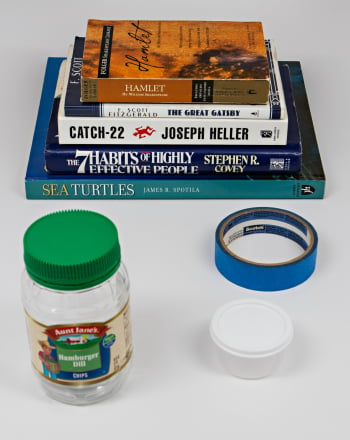Science project
Energy From Garbage: How to Make Biogas
When you send your trash to the landfill, what happens to it? It may get buried under loads of landfill waste. If some of your waste is organic material like vegetables and fruit, this means that it will rot without oxygen. This is called anaerobic decomposition.
If you compost, you likely use the process of aerobic decomposition to help you a long. This process involves oxygen-loving microorganisms that help decompose the materials in the compost. You may even add air to the compost pile by turning it. This speeds up the process of decomposition and makes your compost warmer and less stinky.
Anaerobic means that there is no oxygen present. So how does food waste rot without oxygen? In anaerobic decomposition, bacteria that like this sort of environment work to break down the food waste. These bacteria have been around since long before plants existed!
When the bacteria break down the organic waste, the process releases methane and other gases such as carbon dioxide. These gasses are known as biogases, and can be harnessed as a source of energy. In this experiment, you’ll learn how to make biogas by creating an anaerobic environment and seeing how effective different types of fruits and vegetables are when it comes to creating methane.
Problem
How much methane do different types of food scraps produce?
Materials
- 5 Mylar balloons
- 5 soda bottles
- Duct tape
- Funnel
- Permanent marker
- Pureed onion
- Pureed blueberries
- Pureed lettuce
- Bleach
- Teaspoon
- Funnel
- Old kitchen scale
- Blender
Procedure
- First, create some fruit and vegetable purees. One by one, puree half a cup of blueberries and half an onion in a blender. Weigh them and make sure you have the same weight of blueberry and onion puree.
- Now, puree an equivalent weight of lettuce leaves.
- Finally, puree another half of an onion. Weigh it to make sure it is the same weight as the first half, and put all of your pureed fruits and vegetables aside.
- Mark the different bottles with a permanent marker. Label one Control, one Bleach, one Blueberries, one Onions, and one Lettuce.
- Place one batch of pureed onion with ½ a teaspoon of bleach into one container and fill it to the top with water. Place a Mylar balloon at the top and seal the balloon to the end of the pop bottle using duct tape.
- Now, create the other containers. Use the funnel to place blueberries in one container, plain onion in another, and lettuce in another. Fill each container to the top with water and add a Mylar balloon to each. Leave the control container empty and tape a balloon to the top.
- Watch the balloons and photograph them if possible. Watch what happens to the balloons over the next week, and use this time to make a hypothesis. What happens to the items in the bottles? Why?
Results
The balloons over the blueberries and onions will inflate the most. A few days after inflating, the balloons will begin to deflate.
Why?
Certain fruits and vegetables release a lot more methane than others, and scientists are still trying to figure out why. Onions win out over most vegetables, and blueberries and bananas are high if you’re looking for gas-rich fruits. The control bottle and the bottle with the bleach did not produce a larger balloon. This is because bleach kills anaerobic bacteria.
Why did the balloons shrink? If you use traditional balloons, they may shrink because the gases leak out through the pores, but even if you use Mylar, the balloons will shrink in a few days. How come? At first, the gas produced will be warm due to the processes going on inside the bottle. After a few days, the gases in the balloons will get cooler and shrink, so the balloons will get smaller.
If we were to simply release these gases into the atmosphere, they would contribute to climate change, since carbon dioxide and methane are both greenhouse gases. However, when harnessed, biogas can be a useful source of energy from garbage. Landfills, treatment plants, and other places where anaerobic processes occur can be set up to collect biogas, which can be used in place of coal, oil, or other fossil fuels to produce energy.
Education.com provides the Science Fair Project Ideas for informational purposes only. Education.com does not make any guarantee or representation regarding the Science Fair Project Ideas and is not responsible or liable for any loss or damage, directly or indirectly, caused by your use of such information. By accessing the Science Fair Project Ideas, you waive and renounce any claims against Education.com that arise thereof. In addition, your access to Education.com's website and Science Fair Project Ideas is covered by Education.com's Privacy Policy and site Terms of Use, which include limitations on Education.com's liability.
Warning is hereby given that not all Project Ideas are appropriate for all individuals or in all circumstances. Implementation of any Science Project Idea should be undertaken only in appropriate settings and with appropriate parental or other supervision. Reading and following the safety precautions of all materials used in a project is the sole responsibility of each individual. For further information, consult your state's handbook of Science Safety.













